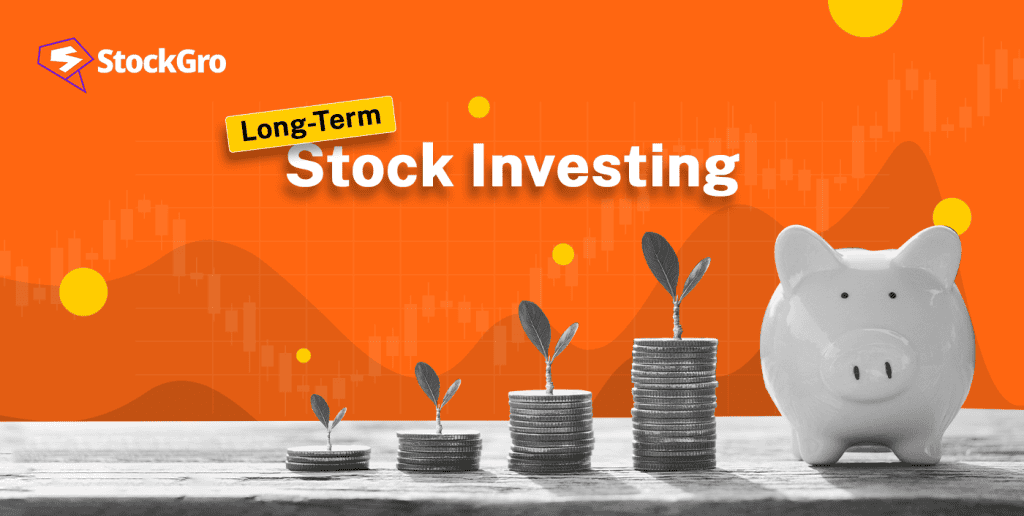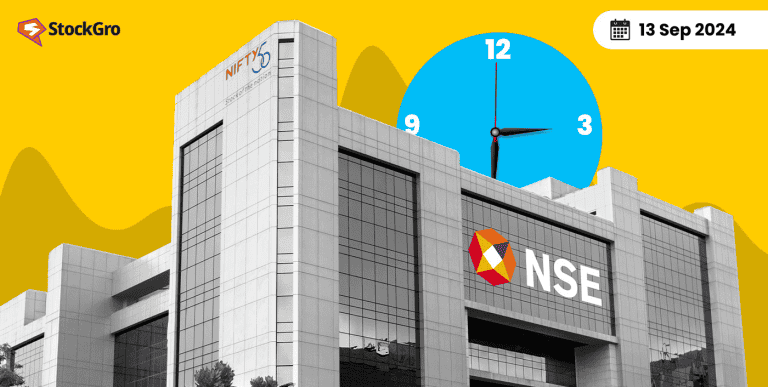
Long-term investing establishes a strong foundation for the accumulation of wealth over time by emphasising enduring economic trends and sustained development. This method typically outperforms short-term trading by minimising the impact of market volatility and leveraging the power of compounding.
To explore how long-term investing can build lasting wealth and stability, dive into our comprehensive blog and discover the benefits for achieving financial success.
What is long-term investing?
“Long-term investing” entails holding stocks or other assets for a year or more. As contrast to day trading or guesswork, long-term investors aim to profit from market growth. This technique adjusts for price changes and leverages market growth
Choosing a long-term approach reduces the pressure to time the market, something
even experienced investors struggle to do so. Instead, you see the benefits of companies and organisations growing over years or decades.
Must read: ESG: A new formula for investing success?
Why is long term investing advantageous?
Long-term investing helps investors weather market swings by accumulating wealth consistently. Long-term investing uses compounding, market trends, and time to expand sustainably, unlike short-term strategies. The following reasons make long-term investing a dependable financial stability technique.
The power of compounding
Compounding is a process that allows your returns to generate additional returns by reinvesting earnings over time, thereby contributing to the further development of wealth.
This method generates superior returns comparatively for investors who sustain their investments over the long term by capitalising on the growth potential of reinvested earnings. It can be an effective method for accumulating wealth, as it fosters consistent growth and reduces market volatility.
Mitigating market risk
Global events and economic data affect stock markets’ short-term changes, which are turbulent. Due to their longer time horizons, long-term investors may weather market volatility, but short-term traders may feel pressure.
Long-term investors can reduce market volatility by diversifying across asset classes and industries. This method stabilises portfolio outcomes by letting some assets outperform others. Historically, stock markets have risen. Patient investors profit when markets rebound from major downturns like the 2008 financial crisis.
After a 6.7% drop on November 20, 2008, during the financial crisis, the strongest five-year rebound returned 164%, or 21% annually. This trend shows the market’s resiliency and the benefits of long-term investing during short-term turbulence.
Lower transaction cost
Frequent trading costs are elevated by booking fees and spreads. Over time, these minor expenses may accumulate and diminish profitability.
The transaction fees that long-term investors incur are significantly lower as a result of their less frequent stock purchases and sales. This cost-cutting strategy has the potential to increase your returns over time.
Leveraging long-term growth opportunities
Long-term investing prioritises sustainable development through fundamental economic changes and advancements over short-term market trends. Long-term investors go beyond trends to find long-term opportunities.
These opportunities arise from technological advances, demographic shifts, and consumer preferences. Understanding and capitalising on these long-term trends can help investors grow over time.
The Indian electric vehicle (EV) sector is a prime example of a successful long-term growth opportunity. Government policies, infrastructure development, and rising consumer demand are all contributing to the robust growth of the Indian EV sector.
Electric vehicles are anticipated to account for nearly one-third of the country’s passenger vehicle market by 2030, and the EV market is anticipated to expand by 66% in 2024. This growth is indicative of substantial opportunities for long-term investors to capitalise on the ascendance of sustainable technologies in the automotive sector of India.
Emotional control and better decision-making
Lifelong investing promotes discipline. Instead of getting caught up in daily market changes, the “buy and hold” mentality helps you focus on your financial goals. This approach decreases the chance of making rash decisions based on short-term news or market swings, leading to better decision-making.
Emotional investment is a major reason individual investors underperform. A long-term plan helps you stay calm and make judgements during market downturns.
Through dividends and passive income generation
Long-term investing yields returns, particularly when we invest in dividend-paying instruments. Shareholders of many established companies receive dividends. Reinvesting passive income to accelerate compounding or using it for personal purposes is possible. Keeping equities for a long time lets investors profit from dividends. Payouts increase immediate income and reinvestment returns.
Tax Benefits
In India, Long-term capital gains tax (LTCG) on equity shares and equity oriented mutual funds held for more than 12 months are subject to a 10% rate of gains exceeding ₹1 lakh. However, Short-term capital gains (STCG) from assets that have been held for less than 12 months are subject to a 20% tax rate, provided that the Securities Transaction Tax (STT) has been paid on the sale.
Also read: Investing Profits from Side Ventures
Long-term investing vs. Short-term trading
| Aspect | Long-term investing | Short-term trading |
| Strategy | Concentrates on the preservation of assets for an extended period to capitalise on compounding and long-term growth. | Uses frequent buying and selling to capitalise on market swings. |
| Time horizon | Held for a more than a year | Common periods are 15, 20, 30, 50, 100, and 200 days. |
| Risk | Diversification and an extended period to recover from market fluctuations generally result in a lower risk. | Enhanced risk as a result of market volatility and swift change. |
| Returns | Strives for consistent, long-term growth; has the potential for substantial appreciation over time. | The potential for substantial returns in a brief period is present, but there is also a higher risk of losses. |
| Investment approach | Focus on company performance and fundamental analysis; buy and hold. | Technical analysis and market trends are the primary focus of active management. |
| Cost | Transaction costs are reduced as a result of infrequent trading. | An increase in transaction costs as a result of frequent purchasing and selling. |
| Emotional impact | Low tension because long-term investments are less subject to market changes. | Continuous monitoring and quick decision-making raise tension. |
Conclusion
Long-term stock investment is a strategy and pathway to financial success. Although short-term trading offers rapid rewards, long-term investing is more beneficial owing to patience and discipline.
By building emotional resilience, lowering transaction costs, and using compounding, long-term investing turns market instability into growth. Thus, to build lasting wealth, you must have a long-term view and let your investments grow.
Also read: Build a better portfolio: How to invest in commodities for the long run
FAQs
1. Definition of long-term investing?
The strategy of holding stocks or other assets for an extended duration, typically a year or more, is referred to as long-term investing. The objective of this strategy is to capitalise on market expansion and generate substantial returns over time. Investors can accumulate substantial wealth and mitigate the effects of short-term market volatility by emphasising long-term potential over short-term fluctuations, which allows them to capitalise on the compounding of returns and the market’s overall upward trajectory.
2. How does compounding affect long-term investing?
Compounding is essential for long-term investing as it exponentially increases the value of investments. The snowball effect, which accelerates wealth growth, is the result of the reinvested earnings and returns, which generate additional returns over time. This procedure enables investors to capitalise on the cumulative earnings in addition to their initial investments. Compounding has a greater impact on investing over a lengthier period, resulting in substantial growth and improved long-term financial gains.
3. What are the finest long-term investments?
Sectors with robust growth potential and stability, including healthcare, technology, renewable energy, and blue-chip companies, are the most promising long-term investments. Increasing environmental awareness and policy support are advantageous to green energy investments. Rapid innovation and digital transformation are leveraged by technology investments. The ageing population and medical advancements present opportunities for growth in healthcare investments. Reliability and consistent returns are offered by blue-chip companies. Investing in these sectors facilitates the attainment of sustainable growth and capital appreciation over time.
4. How can long-term investing reduce risk?
Long-term investing can reduce risk by enabling investors to capitalise on market development and weather market volatility. Investors can capitalise on long-term upward trends and mitigate short-term fluctuations by maintaining investments for extended periods. Furthermore, exposure to individual asset risks is mitigated by a diversified long-term portfolio. Investors are able to recover from downturns and obtain more consistent, stable returns by maintaining a long-term perspective, as markets have historically tended to rise over time.
5. Why is long-term investing better than trading? Long-term investing has many advantages over short-term trading. Focusing on asset growth rather than profits creates more consistent returns. Due to rare trading, long-term investing has lower transaction costs. Avoiding everyday market volatility reduces emotional stress. This technique lets investors profit from market trends and compounding returns, ensuring financial stability and wealth building.

